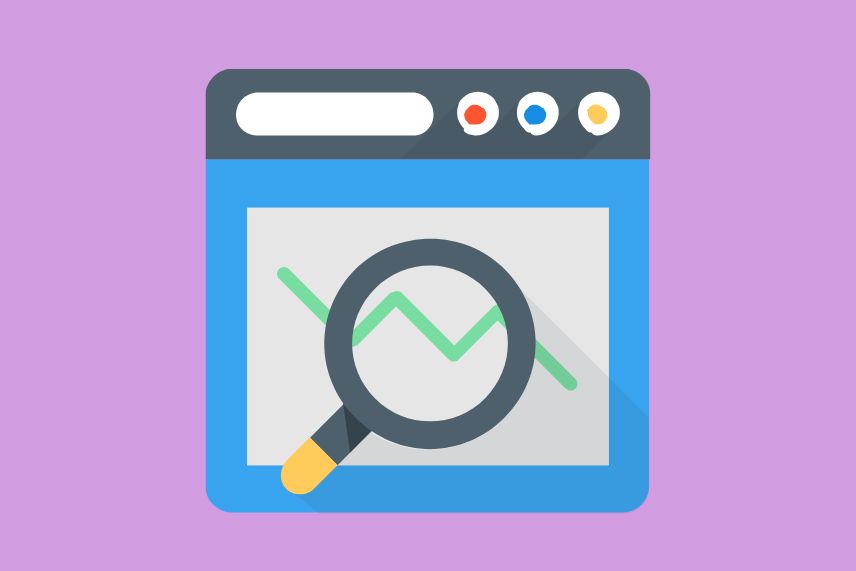SEO [Search Engine Optimization] does not exist within a bubble. For all the strategic moves a brand makes, many others are doing the same thing. Otherwise, they are going one step further and knocking out your website from the SERPs.
So, the question here is: How can you be sure that the marketing team is doing well to keep up with the competitors in the organic search?
Well, the answer to this question is simple. You need to utilize the power of SEO competitive analysis for it. So, in this post, you will learn about the entire SEO process, which contains the following:
- What exactly is the SEO Competitor Analysis?
- Why is it a crucial marketing strategy?
- Software used for conducting SEO Competitor Analysis
- The various ways you can conduct the SEO Competitor Analysis
- Tips and Tricks on SEO Competitor Analysis
So now, let’s begin, shall we?
SEO Competitor Analysis: A Brief Definition

The SEO competitor analysis is to check out the performance of the competing brands and then compare it with your SEO tactic. After that, you can make an optimization plan for proceeding further. This particular competitive analysis can be complex or simple the way you want.
But when you have plenty of data, you will have an excellent understanding of all your competitors. In return, you can create an SEO strategy to help you knock them down during the SEO game. But wait, before you think of conducting the analysis, here are some metrics which you should consider:
- Content Publication Frequency
- Organic Traffic
- Organic Keywords
- Direct Traffic
- Backlinks
- Organic Conversions
- Bounce Rate
- Referring Domains
- Annual Revenue
- Target Keywords
- Many More
When you have many paid SEO tools beside you, it will give you a chance to compare many metrics. But the most basic metrics can let you see how your business website and the competitor’s site stack up.
The metrics will provide you with the foundation to effectively enhance organic marketing efforts.
Why is SEO Competitors Analysis So Crucial These Days?
Companies who work with eCommerce businesses have pointed out SEO competitor research to be a vital part of their onboarding procedure.
Why is that?
In their experience, they have encountered brands whose clients “BELIEVE” are their competitors and are not exactly the brands they are locking horns with. Not having proper knowledge of competitive analysis will enable all the stores online to waste their precious funds and time.
But that’s not all. Knowing having proper knowledge about competitive analysis, you end up targeting all the irrelevant competitors. You will leave out all the primary competition to move forward and climb up the rankings on the search engines like Google, Bing, or Yahoo.
Due to such reasons, it’s suggested that you conduct a competitive analysis regularly. Doing so can help you stay on top of all the latest SEO trends in the industry. You will also know how to improve your SEO efforts to keep on competing.
The Various Types of Competitor Analysis Software
Before going to the main part on how to conduct the competitive SEO audit or analysis, you need to learn about the analysis software. The software is designed to conduct effective and accurate competitive analysis. To know what these tools or software are, this table will help:
| Name of the Software | The Features | The Advantages |
| Brand24 | – Dashboard – Customer Engagement – Configurable Alerts – Audience Segmentation | – The platform is easy to use – Offers real-time monitoring – Has simple organization – Directs follow-up process |
| SEMrush | – Competitive – Analysis – Collaborations/Team – Social Media – Calendar – Direct Publishing | – Conducts keywords research – Historical trends research – Easy-to-use platform – Constantly updates features |
| PipeCandy | – CRM Integration – Market Intelligence – Actionable sales estimates – Transaction-level data | – Excellent customer service – You can find qualified leads – Offers specialized intel and data for ecommerce firms |
| Sprout Social | – Conversion Tracking – Automated Publishing – Content Management – Analytics | – Easy-to-use interface – Robust reporting – Publishing calendar – Competitive Analysis options |
| Ahrefs | – Rank Trader – Content Explorer – Domain Comparison – Keyword Explorer | – Easy-to-use Content Gap tool – Get data on competitor sites – Offers filter options – Get list of keywords quickly |
| Owler | – Integrates with Slack, etc. – Competitor Graph – Access Public & Private Data – Sales Triggers | – Offers three Owler packages – Will run on all systems – Provides real-time insights – User-friendly interface |
| Moz | – Custom Report Builder – Link Research – Keyword Research – Weekly keyword ranking | – Offers countless SEO tools – Has easy sign-in process – Have over 40 trillion links – Obtain valuable data |
How to Conduct SEO Competitor Analysis?

Even though you can use tools like the Google search console to look for data on your competitors, you need to know the best ways to get them done. Under this section, you will come across 6 effective techniques to conduct the technical SEO competitive analysis.
Identify the SEO Competitors
In an SEO Competitive Analysis, you need to determine your competitors’ exact characteristics. Here, the objective is to analyze the target competitors according to the search terms that you’re targeting.
This can help you gain more information on the competitors you are locking horns with, this includes:
- How they are positioning all their products/services within the market
- Their present business activities
- The type of content that drives traffic for them
When dealing with a massive group of competitors, this particular step of competitive analysis can be challenging. You can use technologies, such as Explorer will enable you to check the updated SEO competitor research.
This will help you check how exactly all the content within your domain performs compared to the competitors. You can also discover all the content areas or topics where the competitors are outdoing you and vice-versa.
Compare the Content and Rankings with SEO Competitors
You should spend some time analyzing the targeted keywords to learn about all the biggest competitors through the search results.
By searching, you will come across many unknown competitors that are scaling the SERPs for the top keyword targets. You need to consider the following competitors:
The Direct Competitors
These competitors are known to offer similar software, products, or services to you. For instance:
“Suppose you run a kitchen supply store that sells a certain kind of cooking device or gadget. So, when you search for that specific gadget on google search, you will find many retailers in the results.”
Indirect Competitors [Including Publishers & Content Creators]
These competitors are websites or brands that outrank you and are not direct competitors. These sites or brands can be content creation sites, social media sites, and new sources.
Now, let’s head back to the “cooking gadget example” [find it in direct competitors], you will find articles based on news sites or kitchen blogs. These platforms will mention these kinds of gadgets within the SERPs.
You should consider all these indirect competitors when conducting the competitive analysis. You have to understand where the competitors are ahead of you on the SERPs. Also, remember to check the type of content function for all the keywords you’re targeting.
Conduct SEO Competitive Analysis to Improve the SEO Outcomes
Conducting the competitor analysis through a continuous and deep procedure will be highly beneficial for SEO efforts. It will help you gain plenty of insights into your business.
You must go for an advanced SEO technology platform, a weapon for the marketing technology arsenal. It will provide you with distinct competitive benefits within your sector.
Are you still unsure where to begin?
Go through a reliable SEO competitive analysis platform. It will help you track down the market share through
- Rank Position
- Category
- Location
- Device Type
- Many More
You will also get the chance to check out the traffic-driving pages of your competitors, the keywords they rank, and various other actionable insights. Checking out all these things will allow you to give a boost to your SEO.
Discover Content Opportunities to Outrank SEO Competition
If you want to approach your response to the SEO Competitive Analysis, you should utilize the framework of SWOT or Strengths, Weaknesses, Opportunities, and Threats. Through this framework, you will see the following:
- When the competitors are going ahead of you and ways, you can enhance all those areas
- Competitor’s strength
- Competitor’s weakness
- Chances to mirror the competitor’s strengths and then capitalize on their weaknesses for your website.
When you want the competitive analysis to be successful, you should refrain from assuming anything. You also create an SEO campaign, which is based completely on hard facts obtained from the following three channels:
- Analyze the marketing strategies of the competitors
- Opt for the data channels that are made available to you
- Perform the on-page and off-page analysis
Optimize/Create Current Content Based on Your Discoveries
When it comes to keyword rankings, you need to look for the ones for which the competitor ranks higher. Once you do, it’s vital to check whether or not your website requires optimization. You also need to determine whether or not you need fresh content for SEO.
Your website might carry technical problems, such as broken links or slow speed, which can hinder search engine outcomes. Otherwise, your website needs to be equipped with top-quality content optimized for conversions.
Google’s algorithm is said to change periodically. Pages ranked on the 1st page this month for a specific keyword by end up on the 2nd or 3rd page next time. Due to such reasons, updating the content and monitoring the page rankings is compulsory. It’s because they are a primary part of the SEO strategy and content.
Make sure to analyze when all your pages rank for the targeted keywords and optimize your existing content according to your discoveries. Pages that rank on the 2nd page for the targeted keywords are the ones that need optimization.
These “KEYWORDS” are the striking distance keywords as they have a massive potential to generate a lot more traffic. This is only possible when they are properly optimized and reach the 1st page of the search results.
Spy on the Organic Keywords of Your Competitors
Through a proper search engine navigate process, people can easily find a business or a product they need by mentioning a relevant keyword related to it. So, when you want to use all the best and most relevant keywords for your site, you first need to check the type of keywords utilized by your competitors.
Detect all the high-traffic keywords but avoid all the branded ones. After that, sort all of them out based on what exactly they are useful for. Some keywords might be excellent for the landing pages, and others will be great for the articles or blog posts.
Also, remember to check the keyword difficulty. When you have a limited budget or are interested in short-term objectives, exclude all the high-difficulty keywords. These keywords can take plenty of resources and time to rank well on search engines.
Tips on SEO Competitive Analysis
Now that you know how to conduct an SEO Competitive Analysis properly, there are several tips that you should take a look at as well, which will be helpful.
- Analyze the On-Site Content and On-Page Optimization
With competitive analysis software, you must analyze the on-site SEO of all your competitors. Doing so will provide you with a veritable goldmine of new data. You will also learn how often they publish content, the kind of content they publish, and the keywords they are targeting.
- Check the Backlink Profiles of Your Competitors
The most vital part of the competitive analysis is finding out where your opponents are obtaining all the backlinks. You can take up that information and create top-quality links for your site.
Dissecting the competitors like profiles is an outstanding way to locate all the latest link opportunities. Here, you need a reliable SEO tool because it’s impossible to pull it off manually.
- Try Tracking Down the Competitor’s Ad Spending
When you have all the things to optimize your site but still need to go ahead in the SERPs, there is a possibility that your opponent is outspending. They might be utilizing paid traffic campaigns to generate sales and conversions.
One thing you can do here is to match all the competitor’s spending with yours. You should track down their banner ads, Google Ads campaign, paid posts, promoted content, etc. Doing so will help you gauge what other individuals within your niche are spending on ads.
- Examine the UX and Site Structure
When you have no idea that Google has been all hyper-focused on enhancing the user experience, you need to pay attention. The majority of the algorithmic changes that people have witnessed over the past several years are focused on UX – improved search outcomes, excellent mobile experiences, and faster pages.
Real-Life Examples of SEO Competitor Analysis
In this section, you will learn more about competitor analysis through real-life examples. Let’s check them out.
- Warby Parker – Brand Reputation

Readers, did you ever have this experience where you purchased all your favorite products from just one company and not anywhere else?
This is what exactly happened with Warby Parker, a well-known company with high-quality glasses at a reasonable price. Due to their excellent customer service, many of their customers took to Twitter to express how satisfied they were.
You will certainly find a much better company than Warby Parker to purchase a pair of glasses, but what about customer service? Well, that might be doubtful.
But there are other ways through which companies discern themselves within a well-established and crowded eyewear market. But their impact was extremely powerful.
- Supreme – Exclusivity

The New York-based streetwear company Supreme was founded back in 1994. It’s valued at a whopping $2 billion and makes it pretty difficult to purchase all their products.
How difficult is it? Well, when you don’t reside within driving distance of 1 out of the 13 stores, you’re certainly out of luck. Supreme products are not available in other places [apart from their website].
Even if you live within driving distance of the brand’s stores, you might have to take the whole day off from work or whatever activity you’re doing. You have to fight your way inside the store and grab all your favorite products.
On certain occasions, after standing long hours in line, you might have to return back home empty-handed.
Now, you might be thinking, “Why do people have to do this?” It’s mainly because, once you secure the Supreme apparel, you will gain access to the cool and small group of individuals who wear and own Supreme.
Supreme is like the “ANTI-WALMART,” which is the complete opposite of pervasive. But the demand will always be high because the supply is pretty limited.
Conclusion
SEO competitive analysis is extremely important for your business when you wish to stay one step ahead of your competitors online. The contents of this article will certainly help you learn more about competitor analysis before you proceed further. Remember to check out the software table, it will be helpful.
Author
Methodology
- Who?
We are SaaS experts: Our specialists constantly seek the most relevant information to help support your SaaS business. - Why?
We are passionate about users accessing fair SaaS pricing: We offer up-to-date pricing data, reviews, new tools, blogs and research to help you make informed SaaS pricing decisions. - How?
With accurate information: Our website manager tests each software to add a Genius Score using our rating methodology to each product. Our editorial team fact-check every piece of content we publish, and we use first-hand testing, value metrics and leading market data.
